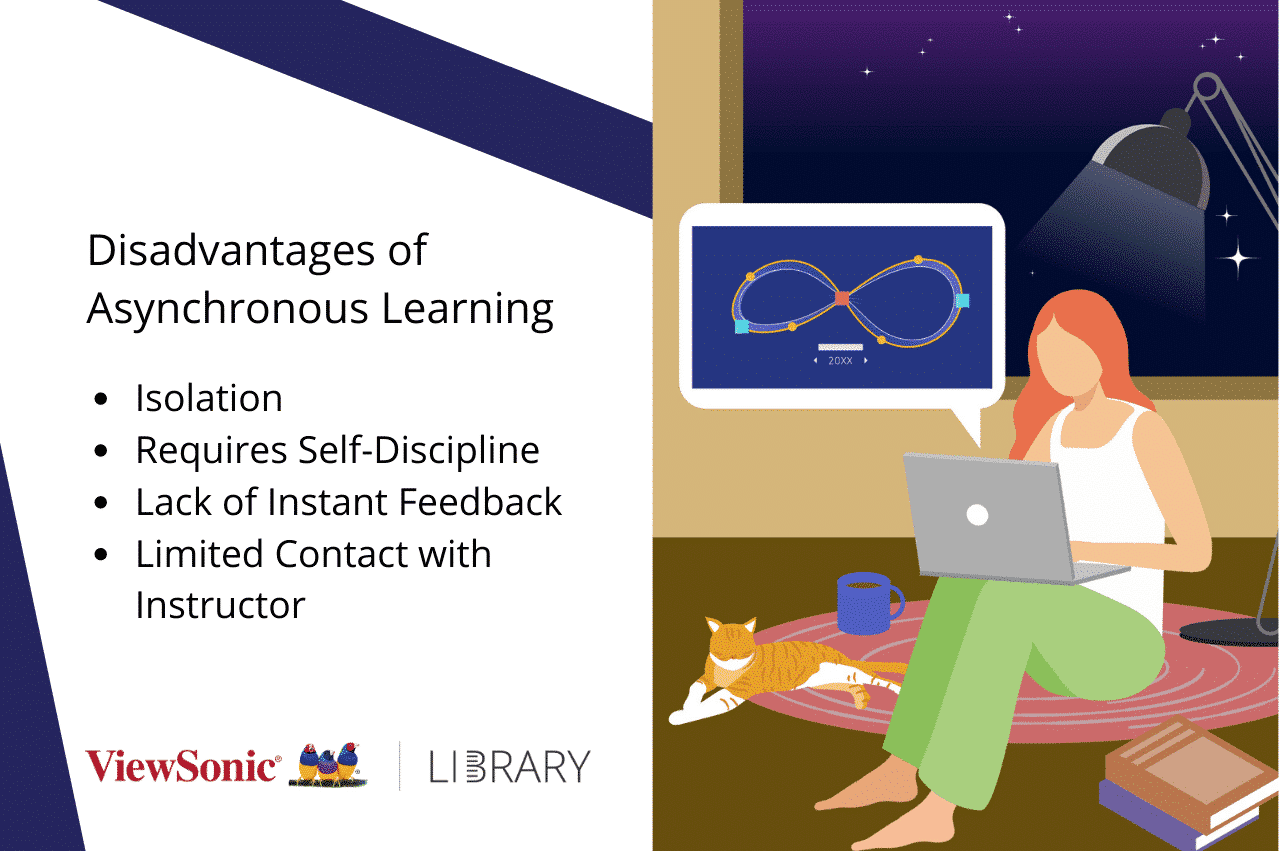The Pros and Cons of Asynchronous Distance Learning
 Asynchronous distance learning software is a major part of remote education. It includes any lesson in which the educator teaches at a different time than the learner attends the lesson, like many pre-recorded e-learning platforms. Asynchronous learning offers flexibility and accessibility. But it loses on interaction and connection in the trade-off. It does make up an important part of education in a lot of surprising ways, however.
Asynchronous distance learning software is a major part of remote education. It includes any lesson in which the educator teaches at a different time than the learner attends the lesson, like many pre-recorded e-learning platforms. Asynchronous learning offers flexibility and accessibility. But it loses on interaction and connection in the trade-off. It does make up an important part of education in a lot of surprising ways, however.Online learning can offer numerous advantages when compared with traditional classroom learning. The asynchronous distance learning model is a common solution that makes learning materials more accessible but loses the responsiveness of a live teacher. In certain situations, it works incredibly well to connect remote learners to educational content, but it isn’t a perfect system.
What is Asynchronous Distance Learning?
Asynchronous learning is a type of learning in which the student and teacher are not directly communicating in real-time. In the world of online learning, this allows you to learn at your own pace regardless of timezone, location, or schedule.
It means that the teacher and student are likely on different schedules and not communicating live. Sometimes referred to as being location independent, asynchronous learning can have enormous benefits in terms of education but can bring about disadvantages depending on what kind of learner you are.
Benefits of Asynchronous Learning
One of the most useful aspects of learning asynchronously is the ability to move at your own pace. This is made possible with a wide variety of digital teaching tools, which use online modules that can be checked 24/7 via your home computer. So if a teacher were to upload an assignment on Monday you could log in and complete the module at your convenience and at your own pace, provided it’s on par with the due date that is.
Flexibility
The ability to control the speed and pacing at which you complete a course gives you a greater sense of freedom and at the same time more responsibility. While asynchronous learning, students have a larger say in their class schedules as opposed to traditional classrooms. This allows for greater opportunities for students who may have other obligations and who might not be able to attend a traditional class.
Practicality
More than giving students greater agency over their own learning, asynchronous learning is simply more practical. Imagine being able to keep your part-time job while you attend college or being able to take a certain program that would normally be too far away for you to consider.
Affordability
Furthermore, asynchronous learning can not only save you time but also money. Take for example the ability to save on basic travel expenses or school supplies because you are not required to travel. The same goes for teaching or learning supplies and even the physical teaching space. And institutional savings are often passed down to digital learners.
Disadvantages of Asynchronous Learning
There are a few disadvantages when in an asynchronous learning environment. Depending on your personality and situation you may find success harder to find than normal. Here are some of the likely roadblocks…
Isolation
Isolation is a major hurdle for online learners. For those that enjoy learning alongside their peers or in social settings, asynchronous learning might take a bit of getting used to.
Requires Self-discipline
In general, a lot of responsibility falls upon the student to not wait until the last minute to turn in assignments, and this is especially true while learning asynchronously. So if you are someone who tends to procrastinate then it is important to remain mindful of your own habits and not let them fall behind.
If you find yourself tempted with distractions while learning or working from home check out these tips for a productive workspace.
Lack of Instant Feedback
While asynchronous learning more often than not has built-in communication tools to communicate with teachers and fellow students, the fact of the matter is that this communication is not always instant.
Limited Contact with an Instructor
With everyone being in different time zones and on different schedules it is likely that you will be responding to emails and messages whenever you are available and not at the same time as your classmates.
Asynchronous Distance Learning as Part of a Complete Program
Asynchronous learning may not appeal to everyone, but it is becoming an increasingly important part of education in the digital age. And while learning out of sync may not be able to replace synchronous learning, it can absolutely be used to augment both new and existing programs.
Here are a few ways that asynchronous learning could be implemented in the future:
- adding recorded materials to a blended learning program
- storing lessons delivered live as review materials
- improving accessibility for differently-abled students
- lesson delivery during school cancellations or illnesses
Like many things in education, asynchronous learning isn’t a one-size-fits-all solution. But it is a handy tool to have available.
Final Thoughts
Whether you have personally tried asynchronous learning or not, it seems as though it's here for the long haul.
As technology continues to improve, chances are that you may find yourself using asynchronous distance learning sometime soon. While it’s important to keep the cons (which are normally social or personality-driven) in mind.
There is no denying the beneficial impact that this practical style of learning will have on the future of education, especially if it is combined with other learning methods to overcome the shortcomings of asynchronous learning.




Comments
Post a Comment